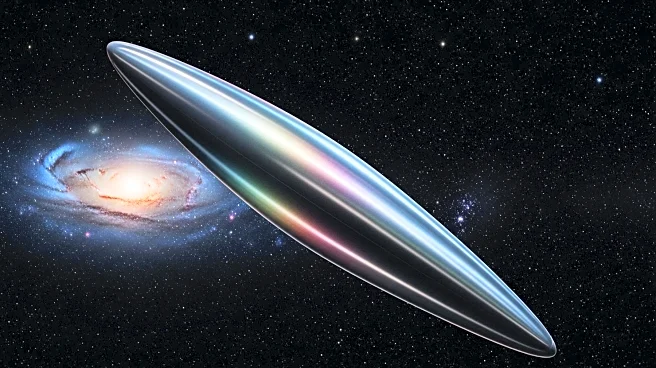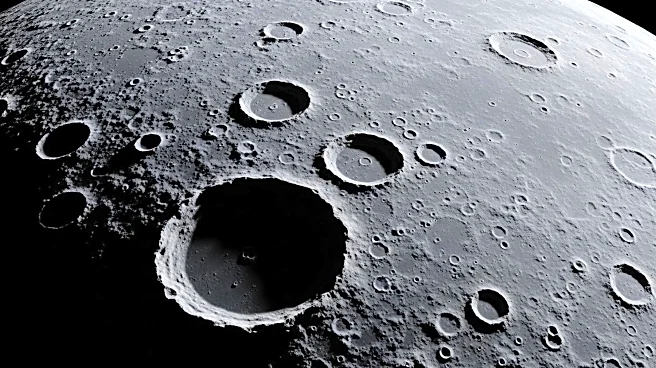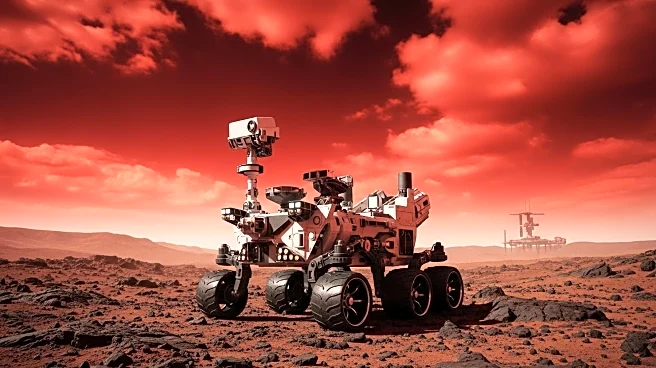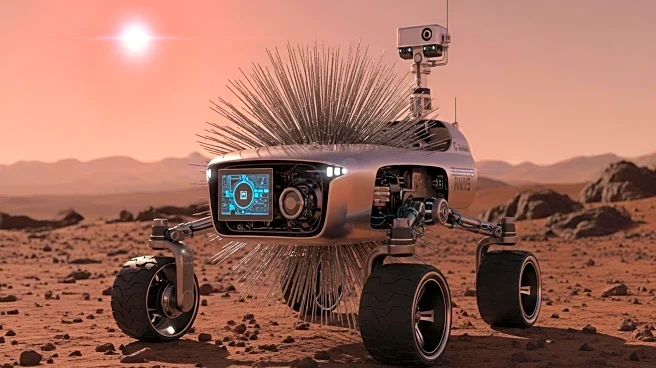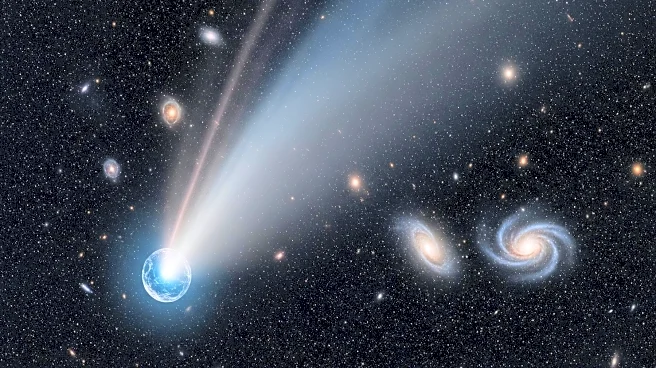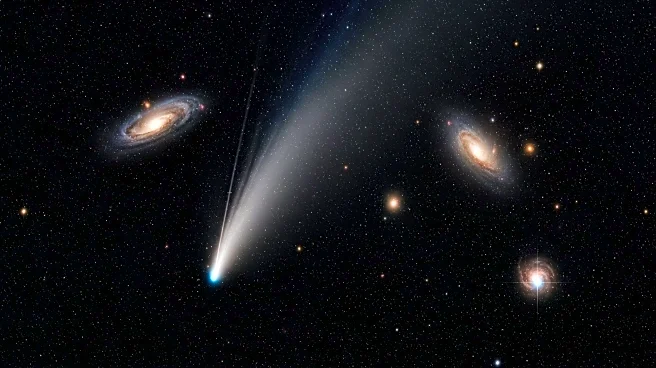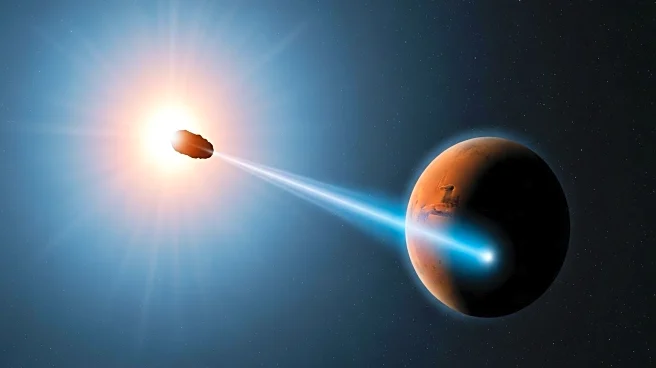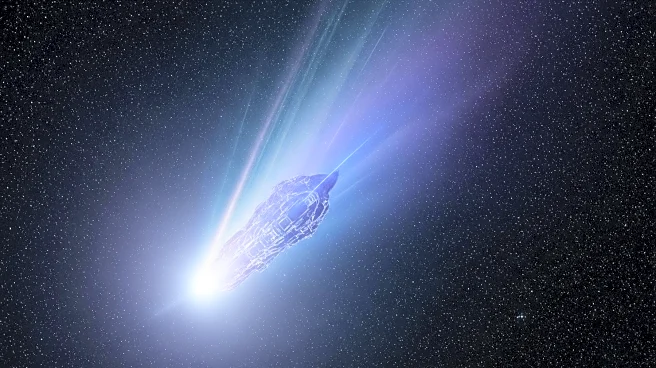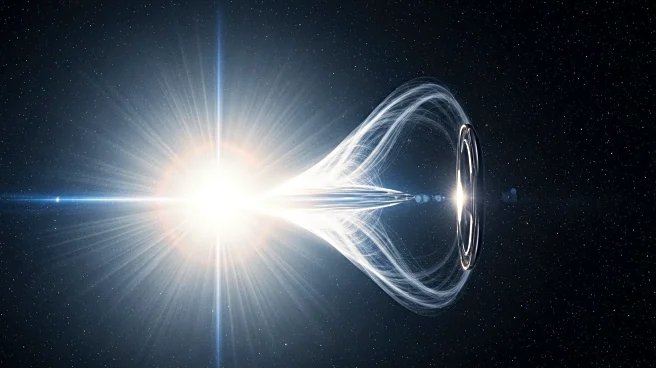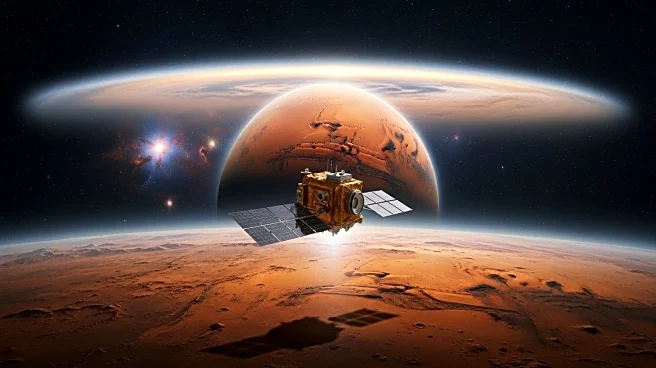What is the story about?
What's Happening?
The interstellar object 3I/ATLAS has been identified as anomalously massive and large, sparking debate among scientists about its nature. Avi Loeb, a prominent astrophysicist, has highlighted several anomalies associated with 3I/ATLAS, including its ecliptic-aligned trajectory and the presence of nickel without iron in its gas plume. These characteristics have led to speculation about whether the object is natural or technological in origin. Despite these anomalies, mainstream scientists have largely dismissed alternative explanations, maintaining that 3I/ATLAS is a comet. Loeb argues for an open-minded approach to studying the object, emphasizing the importance of considering unconventional possibilities.
Why It's Important?
The study of 3I/ATLAS is crucial as it challenges existing paradigms in astronomy and could potentially reveal new insights into interstellar objects. Understanding its nature may have implications for the search for extraterrestrial life and the study of cosmic phenomena. The debate surrounding 3I/ATLAS also highlights the tension between traditional scientific approaches and the need for innovative thinking in the face of unexplained anomalies. This situation underscores the importance of scientific humility and the willingness to explore unconventional theories.
What's Next?
High-resolution imaging of 3I/ATLAS is expected soon, which may provide more definitive information about its characteristics. The HiRISE camera onboard the Mars Reconnaissance Orbiter is set to capture images with a resolution of 30 kilometers per pixel, potentially offering new insights into the object's surface and composition. These observations could either confirm or challenge existing theories about 3I/ATLAS, prompting further research and discussion within the scientific community.
Beyond the Headlines
The controversy surrounding 3I/ATLAS reflects broader issues in scientific research, such as the resistance to unconventional ideas and the role of dogma in academia. It highlights the need for a more open-minded approach to scientific inquiry, where anomalies are thoroughly investigated rather than dismissed. This case also illustrates the potential for scientific discoveries to challenge established norms and inspire new lines of inquiry.
AI Generated Content
Do you find this article useful?
